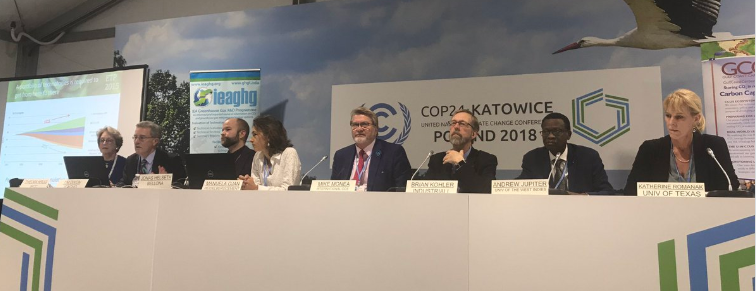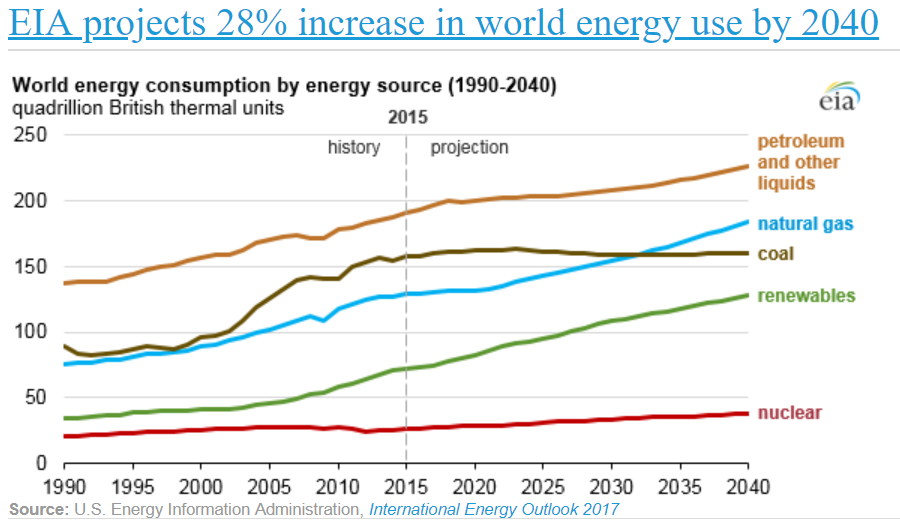
The fastest, most economic way to reduce industrial emissions is by adding CCS
Mike Monea,
Former President/CEO
International CCS Knowledge Centre
Michael (Mike) Monea grew up in Southern Saskatchewan, Canada with a passion for geology which has fuelled his career path to date. He holds designations as a Professional Engineer, Professional Geoscientist and is a member of the Canadian Institute of Corporate Directors. His entrepreneurial vision is the root of his past successes in developing companies and overseeing the construction of megaprojects.
Mike is the former President and CEO of the International CCS Knowledge Centre a non-profit organization which he helped to establish with BHP Billiton and SaskPower. This new initiative represents a culmination of Mike’s hard work as the president of Carbon capture and storage initiatives at SaskPower where he was in charge of creating and building the world’s first carbon capture plant for a coal electric unit valued at $1.5 billion CDN.
As a world-leading scientist, research and development is a key component in Mike’s mission to help reduce greenhouse gases through CCS technologies. His oversight of a scale-sized Carbon Capture Test Facility has ensured that progress continues to be made with international vendors on post-combustion capture systems. Progress gained in these areas can help reduce costs and advance CCS.
Mike’s past experience in oil and gas has allowed him to understand the benefits of and opportunities for carbon dioxide for enhanced oil recovery (EOR) and deep saline reservoir storage. Mike secured sales of CO2 from the Boundary Dam CCS Facility to oil fields in Southern Saskatchewan. Early on in his professional career he was trained in oil and gas operations in United States and went on to create two oil and gas companies, Nautilus Exploration and Associated Ltd. (in 1982) and Flatland Exploration Ltd. (in 1999). He had the opportunity to develop EOR procedures as the head of the Petroleum Technology Research Centre (PTRC), amongst other processes for the oil and gas industry.
Throughout his career, Mike has understood the importance of partnerships at a local, national and international level. In 2006, Mike formed a Chinese investment company and since then has worked with most power, oil and regulatory agencies in China on CCS knowledge transfer. Mike has travelled the world speaking on CCS and is a sought-after panellist and advisor for this ground-breaking technology.
Mike is now the President of the Monea-CCS Services Ltd.
In a world of rapid change, it’s comforting to know that there are a few things that we can count on. And based on the
Shand CCS Feasibility Study (Shand Study) recently released by our experts at the International CCS Knowledge Centre, the economics of carbon capture and storage (CCS) are one of those things we can count on.
Our Shand Study proves that it is possible to bring down the capture capital costs of large-scale CCS projects by 67% and capture 2Mt of CO2 per year with a capture rate that can reach up to 97% with reduced electrical load. Translated, this means that 2nd generation large-scale, CCS facilities can integrate well with renewable electricity while following load. In addition, fly ash sales can further offset CO2, leading some to believe that a carbon neutral CCS facility could be a reality, now.
In my work, I have the privilege of meeting many incredible people from across the globe and the prevailing sentiment I receive is a sense of people wanting to take significant and active steps to change the trajectory of climate change.
Last week I was in Poland at the COP24 – an informal name for the 24th Conference of the Parties to the United Nations Framework Convention on Climate Change (UNFCCC). I was struck by the compelling story of those needing support now. I was on a panel, CCS for Decarbonizing Industry.
Andrew Jupiter of Trinidad & Tobago said, “To deny climate change is to deny our reality.”
His message that small island nations feel the impact through the repeated catastrophic weather events and they want to be active in changing that by using CCS to decarbonize.
We All Breath the Same Air
I was also invited to be on a panel,
CCS in China - Policies,  Financing & Commercial Operatio
Financing & Commercial Operation, with delegates from China Ministry of Science and Technology, Guangdong CCS Centre, and Northwest University of China, and the Global CCS Institute. Whether from Asia, North America, Europe or an island country, we all breath the same air. It is evident and analysis is agreed upon, we need CCS for meeting the goals of the Paris accord.

Experts in CCS now recognize that the gap between meeting the goals set up in the Paris accord and actual deployment is huge and needs addressing if there is any chance of reducing global greehouse gas emissions (GHGs). Transition to cleaner fuels is essential however this must be done properly with the phase out of traditional fossil fuels that are high emitters of GHGs. The transition may include cleaning up fossil fuels for the power industry or industrial sources. CCS can be used as an essential stopgap as an important transitory technology for coal-fired power plants – ensuring a source of reliable, low emissions energy, while also developing a C02 capture systems for industrial applications. It is well established that CCS is the right thing to do, and we have also known that, with each generation, the costs of CCS will continue to decrease.
It is widely accepted that large-scale CCS has a critical role to play in mitigating GHGs. Recently, the Intergovernmental Panel on Climate Change (IPCC) highlighted the unique importance of CCS technologies in meeting climate goals. With advancements in CCS innovation that positively reduce cost, the world can no longer say that expense is a barrier. CCS can be economically viable.
By looking at the U.S. Energy Information Administration's (EIA)
 energy consumption projections of the world to the year 2040
energy consumption projections of the world to the year 2040, it’s clear that the world will continue to be heavily reliant on fossil fuels – the world’s most reliable source of energy. We can’t shut -down fossil fuels in a week or a month to transition into more low emission sources of energy. As the human population and middle class increases, so will the demand for industrial products and our need for reliable energy to power our world. The by-product of growth is excessive CO
2 emissions – the leading cause of climate change. Renewables, such as wind and solar have important contributions to make toward clean energy alternatives. Yet these technologies may still be decades away from providing reliable and consistent universal base load power options. We must also acknowledge that each country, state, province or company that wishes to transition to low emission products, there is no one solution for all.
Simply put, we need to use fossil fuel but it must become much cleaner using CCS. The expected reduction of both capital and operating costs can increase acceptance and drive deployment. Acceptance then deployment is key. It will take a collaborative effort to witness this evidence and ensure that policies are implemented that will drive CCS to the top of the agenda.
During COP24, IPCC’s Thelma Krug said that deep emission reductions are required in energy-intensive industry to limit warming to 1.5oC.
She added that the evidence is robust and agreement is high that CCS is needed to mitigate emissions.
The Shand Study is based on our hands-on experience developing, building and deploying a real operating plant SaskPower’s
Boundary Dam 3 CCS Facility (BD3), and as a result, the economics of CCS have credibility. While ongoing improvements are anticipated, this report highlights that second-generation CCS will undoubtedly realize many improvements over the first generation. Witnessing first-hand what improvements were necessary, allowed us to dive deep into the issues and solve them, removing barriers for CCS.
CCS Readying for Cement, Steel, Natural Gas
There is also another real and relevant importance from this study, as CCS is the only technology that can be applied to other sources and can aid in decarbonizing industrial emissions. Post combustion CCS takes flue gases (the emissions) and cleans them using a solvent (called an amine). Because the post combustion capture is downstream from an emissions source (i.e. “post” combustion), and because the emissions from a coal-fired power plant are substantially like those from other industrial sources of emissions, post combustion capture on coal paves the way for other industrial applications such as steel, cement or natural gas power generation.
As stated by Manuela Ojan from Heidleberg Cement during COP24, the cement industry is definitely engaged in decarbonizing. Specifically, on two fronts, through its processing as well as in its products.
Again, this is a significant advancement as these industries play an enormous roll in the infrastructure of our planet, everything from roads to buildings. They are heavy emitters but with CCS, it is possible to clean them up. We can continue to rely on these industries and take care of our planet at the same time.
The launch of the Shand Study has been exceedingly well received by many leading experts who understand the immense potential, the significant opportunity that these findings represent. Our practical, real world findings can be considered comforting news to everyone who cares about how we will leave this planet for our children. Our team of experts at the Knowledge Centre are excited to share with the world that the Shand Study has proven we can do CCS cheaper and more efficiently.
Unprecedented Commitment to CCS
Momentum is building and there are many reasons to take the next steps toward broad scale deployment. We see this from global CCS leaders who are all equally passionate about finding solutions to reducing emissions. Globally, we are seeing an unprecedented commitment to the advancement of large-scale CCS and this is exciting.
As Mark Field, UK Minister of State for Asia and Pacific at the Foreign and Commonwealth Office, says that breakthroughs in CCS will help to decarbonize our future. “This requires massive investment in CCS - it is an investment in the truest sense of the word.”
 Financing & Commercial Operation, with delegates from China Ministry of Science and Technology, Guangdong CCS Centre, and Northwest University of China, and the Global CCS Institute. Whether from Asia, North America, Europe or an island country, we all breath the same air. It is evident and analysis is agreed upon, we need CCS for meeting the goals of the Paris accord.
Financing & Commercial Operation, with delegates from China Ministry of Science and Technology, Guangdong CCS Centre, and Northwest University of China, and the Global CCS Institute. Whether from Asia, North America, Europe or an island country, we all breath the same air. It is evident and analysis is agreed upon, we need CCS for meeting the goals of the Paris accord.
 energy consumption projections of the world to the year 2040, it’s clear that the world will continue to be heavily reliant on fossil fuels – the world’s most reliable source of energy. We can’t shut -down fossil fuels in a week or a month to transition into more low emission sources of energy. As the human population and middle class increases, so will the demand for industrial products and our need for reliable energy to power our world. The by-product of growth is excessive CO2 emissions – the leading cause of climate change. Renewables, such as wind and solar have important contributions to make toward clean energy alternatives. Yet these technologies may still be decades away from providing reliable and consistent universal base load power options. We must also acknowledge that each country, state, province or company that wishes to transition to low emission products, there is no one solution for all.
energy consumption projections of the world to the year 2040, it’s clear that the world will continue to be heavily reliant on fossil fuels – the world’s most reliable source of energy. We can’t shut -down fossil fuels in a week or a month to transition into more low emission sources of energy. As the human population and middle class increases, so will the demand for industrial products and our need for reliable energy to power our world. The by-product of growth is excessive CO2 emissions – the leading cause of climate change. Renewables, such as wind and solar have important contributions to make toward clean energy alternatives. Yet these technologies may still be decades away from providing reliable and consistent universal base load power options. We must also acknowledge that each country, state, province or company that wishes to transition to low emission products, there is no one solution for all.

